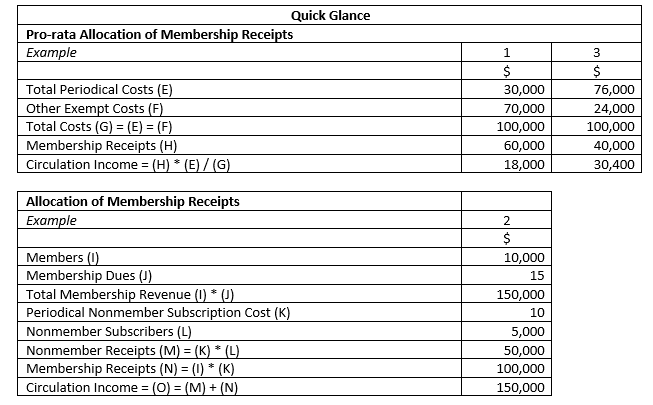By Edward Yoder, CPA, MSA
Two previous articles in this series went into detail about how nonprofits can incur taxable income from advertising or sponsorship sales, and how different the taxable impact can be depending on the relationship of certain costs to certain types of income. There is another important consideration of UBTI and advertising: allocable membership receipts. Especially for exempt organizations like trade associations or professional organizations, proper consideration to allocating membership receipts can affect the overall taxable impact of periodicals.
What are Allocable Membership Receipts?
Nonprofits can charge subscription fees or member dues for exclusive access to content. And, like advertising or sponsorship income, these charges can generate taxable income. Allocable membership receipts of an exempt organization periodical are determined in accordance with the following rules.
Subscription price charged to nonmembers
If 20 percent or more of the total circulation of a periodical consists of sales to nonmembers, then the subscription price charged to nonmembers determines the price of the periodical for purposes of allocating membership receipts.
If 20 percent or more of the members of an exempt organization pay lower membership dues because they do not receive the periodical, the reduction in dues for these members determines the price of the periodical. This price is used to allocate membership receipts specifically to the periodical.
Pro rata allocation of membership receipts
Since it may generally be assumed that membership receipts and gross advertising income are equally available for all the exempt activities, the share of membership receipts allocated to the periodical are an amount equal to the organization’s membership receipts multiplied by a fraction, where the numerator is the total periodical costs and the denominator is such costs plus the cost of other exempt activities of the organization.
Allocating Membership Receipts to Nonprofit Periodicals
Recall that circulation income is the total amount derived from selling or distributing a periodical’s content. Circulation income also includes the portion of membership fees attributed to the periodical.

Professional associations and other professional or trade organizations run into this issue frequently, and leaders may not understand how to accurately account for membership receipts and periodical sales. Periodicals can be powerful tools for reaching an exempt organization’s audience and advancing their mission. It’s more than providing meaningful content – the strategy also lies in tax implications.
For questions about how to allocate membership receipts to the circulation income of nonprofit periodicals, reach out to your PBMares Tax Advisor today to learn more, or contact Tax Partner Ed Yoder, CPA, MSA.





